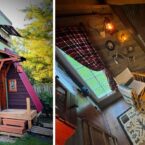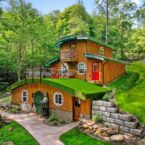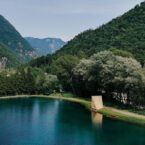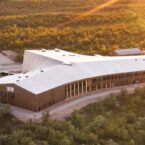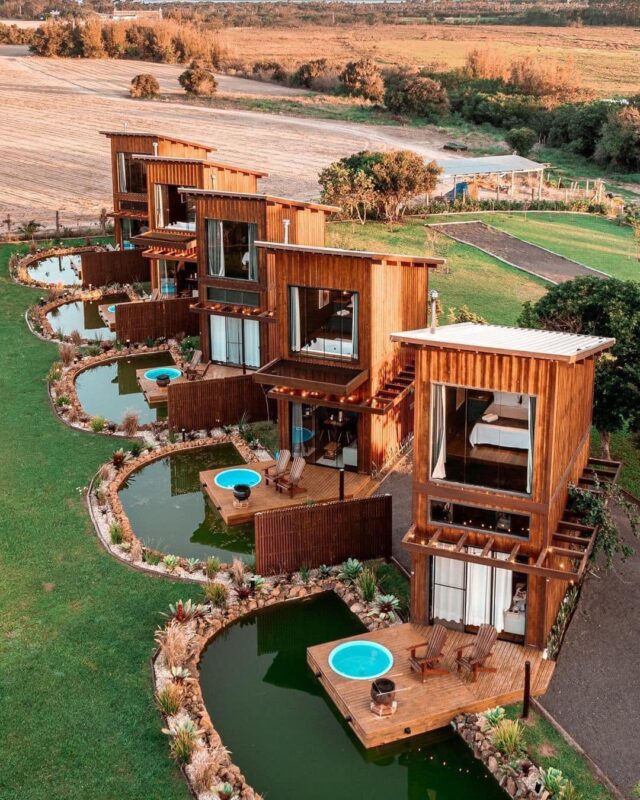
Tower-style cabin overlooking the lagoon. It has a bedroom with a hot tub, a bathroom, a full gourmet kitchen, barbecue, 300mb fiber optic wifi, Smart TV, fireplace, private pool.
Situated on a 6000m² fenced land with more than 500 native trees, it has the following facilities: firewood stock, orchard, vegetable garden, floor fire pit space, barbecue kiosk, hammock, outdoor gym, picnic space, deck with sun loungers, game room with pool and ping-pong table. Continue reading “Tiny Home Community Village” »

This crocheted outfit includes purple beret hat and scarf. It’s made of soft and durable acrylic yarn. This is available in the link below… Continue reading “French Beret Hat and Scarf Cat Costume” »

Highland cow blanket is super soft and comfy, Made with 83% Polyester and 17% Spandex, a medium heavy-weight fabric (8.85 oz/yd² (300 g/m²)) that feels extra soft to the touch. Continue reading “Patchwork Highland Cow Velveteen Plush Blanket” »

Recent research suggests that the ancient site of Göbekli Tepe in Turkey may be home to the world’s oldest known solar calendar. This 12,000-year-old archaeological site, already renowned for its early evidence of organized human settlement, now offers new insights into the origins of timekeeping. Scholars have long debated who first began tracking time, often citing the Roman calendar introduced by Julius Caesar or the sophisticated systems of the ancient Maya. However, intricate carvings at Göbekli Tepe, specifically V-shaped symbols on a pillar, have been interpreted as part of a 365-day lunisolar calendar system, with 11 additional days, making this the earliest example of such a system. Researchers also found connections between Göbekli Tepe’s 11-pillar enclosures and similar structures at nearby Karahan Tepe, suggesting a broader, region-wide use of this early calendar system.

The study further proposes that the people of Göbekli Tepe placed significant importance on the summer solstice, symbolized by a V-shaped motif worn around the neck of an eagle-like bird. This symbol appears on various artifacts, including the Urfa Man statue and other carvings at nearby sites, hinting that these figures may have been seen as time-controlling or creator deities. The researchers believe that the development of this calendar was likely linked to the tracking of a comet shower that impacted Earth around 10,850 BCE, an event that may have had profound effects on the people of Göbekli Tepe. According to Martin Sweatman, a co-author of the study, the lasting importance of these carvings suggests that this catastrophic event could have led to the rise of a new religious or cultural tradition, potentially influencing the early development of civilization.



The Rhythm 4RQ002-003 Disaster-preparedness Clock is a cutting-edge gadget that merges everyday functionality with essential emergency features, making it an indispensable tool for any household. At its core, it operates as a reliable alarm clock, with Citizen quartz movement for precision timekeeping and multiple alarm settings to suit your daily needs. Its sleek design and compact size make it an ideal addition to any bedside table, ensuring it blends seamlessly into your everyday environment. But what sets this clock apart is its dual-purpose nature—it transitions effortlessly from being a simple timekeeper to a vital survival tool in times of disaster.

In emergencies, the 4RQ002-003 proves its worth with features designed to keep you connected and prepared. The built-in radio with Wide FM ensures you stay informed, even when traditional AM signals are compromised. Its power options, including AA batteries, a rechargeable NiMH battery, and a hand-crank generator, provide multiple ways to keep your devices charged and the clock operational, ensuring you’re never left in the dark. The powerful LED flashlight, USB charging ports, and durable design further enhance its utility, making it a crucial companion in any crisis. Available in Japan for approximately 112 USD, this clock is not just a timepiece but a comprehensive disaster-preparedness tool, offering peace of mind and security when you need it the most.








Two weeks ago, the National Oceanic and Atmospheric Administration (NOAA) issued an alert about a massive geomagnetic solar storm that commenced on August 11, leading to a breathtaking display of auroras. This natural phenomenon, fueled by a series of coronal mass ejections (CMEs), lit up the skies for over 48 hours and could be seen as far south as Alabama and Northern California. Among those who captured this incredible light show were NASA astronaut Matthew Dominick and commercial airline pilot Scott Bateman, each from vastly different vantage points. Dominick, aboard the International Space Station, took stunning photos of the aurora with the moon visible behind a supply craft and the Soyuz spacecraft set against a backdrop of bright green auroras. His images quickly gained popularity online, showcasing the awe-inspiring beauty of Earth from space.

On the other hand, pilot Scott Bateman had a unique perspective from within Earth’s atmosphere as he flew a long-haul route in an Airbus A350-1000. As he soared at 39,000 feet above the planet, Bateman witnessed the auroras unfold in vivid detail, capturing the scene on his iPhone 15 without any editing or filters. Describing the experience as “spectacular,” Bateman noted that the light show began as his flight passed over Chicago and continued until dawn over Ireland, where the auroras shifted to stunning purples. His close-up view from the cockpit provided an extraordinary, real-time connection to the same natural event that Dominick observed from orbit, highlighting the incredible beauty and power of our planet’s interactions with solar activity.



Even though summer is soon coming to an end, it can still be fun to create a DIY summer wardrobe piece for your kids. Instead of rushing out to buy shorts on sale, why not upcycle those old jeans that have seen better days? Whether your child’s favorite pair of jeans is getting too short, or they have some worn-out pairs lying around, you can easily transform them into stylish and unique shorts. With just a few materials like cute fabric scraps or Continue reading “How to Upcycle Old Jeans into Cute Cut-Off Shorts” »

This is an awesome pattern. The pattern is very well written and easy to follow! Looks amazing! The pattern is available in the link below… Continue reading “CROCHET BAT PATTERN” »

Planning a trip to Alaska takes on a whole new level of adventure with the opportunity to stay in classic airplanes converted into luxurious accommodations. Flying instructor John Kotwicki has created a unique “airplane amusement park” in southern Alaska, where old, decommissioned aircraft are transformed into Airbnbs. Continue reading “Plan a Trip to Alaska and Stay in These Classic Airplanes Converted into Luxury Accommodations” »

































